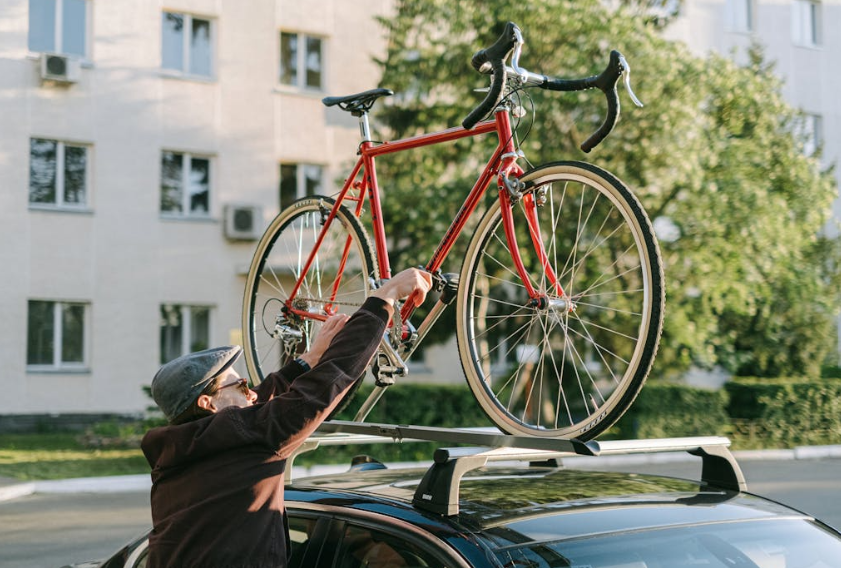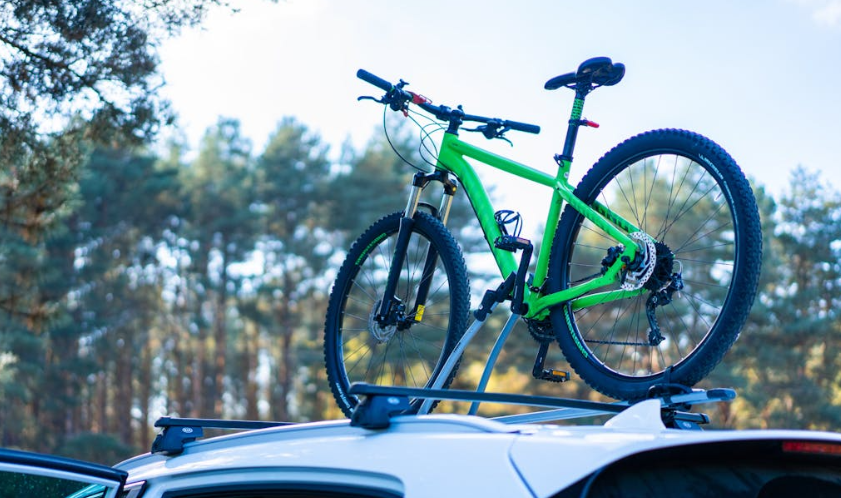Renting Cars For Cycling Trips: A Practical Rider Guide

The first hour of a cycling trip often hinges on the pickup counter. Small choices during booking ripple through the whole route. Fit, loading time, and return rules all affect how far you ride tomorrow.
Many riders now pair a rental car with bikes for a long weekend or stage race. If you are building your plan, start by pricing car hire with East Coast Car Rentals for flexible pickup windows and a broad fleet. This gives you room to match cargo needs, rack options, and passenger comfort without pushing your budget.
Match Vehicle Type To Your Bikes And Route
Hardtail plus one bag needs a very different car than two enduro bikes and gear. Sketch your load honestly, including helmets, shoes, pump, spares, and coolers. Add rain bags and food boxes, because they always appear on travel day.
Sedans can work for two bikes inside with front wheels off and padded fork mounts. Wagons and compact SUVs fit two bikes upright with simple fork blocks, saving exterior drag. Larger SUVs or people movers help when frames are long, or wheelbases push rack limits. Measure wheelbase and bar width before pickup, then compare against door openings and rack arms.
Choose A Rack Strategy That Protects Frames
Rack choice decides loading speed and bike safety under highway wind. Roof trays suit lighter bikes and riders comfortable lifting above shoulder height. Hitch platforms give fast loading and keep grime low, which helps on rainy returns. Trunk strap racks fit many cars, yet tension can shift with heat and moisture over long drives.
If you bring your own rack, confirm hitch size and tongue rating during booking. Ask for a photo of the rear bumper area, because some bumpers hide receivers. For soft-frame or glossy finishes, add frame pads, bar tape scraps, and microfiber wraps. A small torque wrench and extra straps remove most roadside rack stress.
Read The Rental Terms Like A Mechanic
Car bookings look simple until a scratched bumper or bent plate enters the story. Read the agreement line by line, then note how exterior accessories are treated. Look for language about roof loads, rear racks, and adhesive mounts. Save a screenshot of approvals and exclusions inside your trip folder.
Before leaving the lot, photograph the roof, bumpers, lights, and number plates from four angles. Load bikes, recheck photos, then ask staff to view the secured setup. Keep the load under the car maker’s rating and the rack maker’s rating. Return the vehicle clean, with plates visible and the rack removed, so inspections move quickly.
Book Smart: Timing, Mileage, And Flexibility
Cycling trips shift with weather, mechanicals, and rider legs. Build slack into pickup and return times, and pick locations with early opening hours. Prepay deals can be strong, yet flexible rates often beat change fees after a storm. Unlimited mileage helps when an extra detour saves a race day.
Use this quick booking checklist to avoid late surprises:
- Confirm vehicle class, hitch size, and roof rail type in writing.
- Add a second driver if you expect fatigue after long climbs.
- Verify insurance cover for racks and sporting gear in transit.
Document every change on your phone calendar with alerts. Save the branch phone number in your favorites for faster help. Those small steps keep you moving when plans drift by a few hours.
Pack Bikes And Gear For Fast Transitions
Fast loading protects legs and daylight. Break bikes into predictable bundles, then label small parts bags for each rider. Wheels, thru axles, pedals, and computers should never float loose in a trunk. Use a simple sequence every time, so mistakes do not appear at dusk.
Lay down moving blankets or foam sheets under forks and derailleurs. Cover rotors with cardboard circles, then tape lightly to avoid residue. Keep a headlamp, nitrile gloves, and a spare rag within easy reach. Stash a compact floor pump and sealant next to the door for quick pressure checks.
Know The Rules For Carrying Bikes On Cars
Local road rules set size, projection, and plate visibility limits. Racks can hide lights or plates during wet rides, which invites stop checks. Fit a plate board or auxiliary lights if required by local law. Keep a small brush and cloth handy to clear mud from plates at fuel stops.
Review load length and restraint rules before you roll. Clear guidance on projecting loads and restraint methods is published for drivers, and it helps avoid fines.
Fuel, Range, And Terrain Planning For Riders
Bikes change drag, and roof trays change fuel use, especially on windy highways. Expect higher consumption from tall loads and wide bar setups. If budget is tight, favor rear-platform racks and moderate cruise speeds. Those choices cut fuel stops and reduce buffeting on gusty bridges.
Map fuel near rural trailheads and store hours for smaller towns. Add one extra stop window on routes with long gaps, because food helps late-day focus. If charging an electric rental, check charger uptime history and plug type. Build a buffer for cold mornings, headwinds, and mountain grades.
Insurance And Damage Cover Without Guesswork
Read accident and damage processes before day one. Save claims contacts and incident steps in a shared note. Photograph any minor contact with the rack, hatch, or roof immediately. Swap details carefully with other drivers if anything touches during loading near traffic.
Accessory cover varies by policy and location. Ask your card issuer about rental cover terms for external racks and sporting goods. Some policies treat racks like modifications, which changes excess and claim paths. Clear answers reduce stress if you meet crosswinds, low branches, or tight hotel garages.
Parking, Security, And Overnight Choices
Bikes on cars attract attention in busy lots. Pick spots under cameras, near staffed areas, and under decent lighting. Use a heavy chain through frames and rack base when stopping for meals. Bring compact cable locks for quick bathroom breaks on remote roads.
At hotels, ask for ground level rooms near entrances. If safe, bring bikes inside at night rather than leaving them on racks. Early staff are often helpful when you request a luggage cart or corner storage. Ten minutes off loading at bedtime buys peace and a faster morning rollout.
Field Checks That Save A Day Of Riding
Small checks prevent big delays. After the first twenty minutes on the highway, pull over and retighten straps. Feel rotor heat and tire pressure, then look for rubbing points on paint. Repeat the check at each fuel stop and after unsealed sections.
Carry a small parts kit with spare straps, quick links, brake pads, and a hanger. Add chain lube, alcohol wipes, tiny zip ties, and a mini torque wrench. Keep an old towel for chain grime and a second towel for hands. Those two pieces of cloth solve half the problems you will meet.
Respect Load Restraint Guidance
Correct restraint is not guesswork, it follows published practice. Heavy items belong low, against seat backs, and tied off. Avoid stacking wheels where they can become loose discs under sudden braking. Test the whole load with a firm shake before you drive.
For a clear reference on restraint methods, see the National Transport Commission Load Restraint Guide, which explains tie-down principles for light vehicles

Bring It Back Like You Want Your Deposit Back
Return days go better with a short, calm routine. Remove racks and wipe contact points before reaching the branch. Photograph the roof, glass, bumpers, and plates again without gear attached. Fill the tank early, so a traffic snarl does not push you past the agreed time.
Hand over keys, then offer your photos if staff raise a question. Keep receipts and time stamps in your trip folder for a few weeks. If you borrowed extra straps or a plate board, return them clean and dry. Small courtesies shorten conversations and close the trip on a friendly note.
Takeaway
A solid rental plan keeps bikes safe, riders fresh, and miles flowing without drama. Match the car to the load, secure the gear with care, and follow local rules. Build slack into your timeline, and keep records that settle small questions fast. Those habits turn a rental counter into the smooth start your ride deserves.
